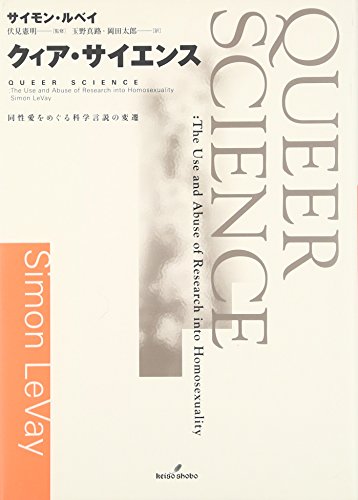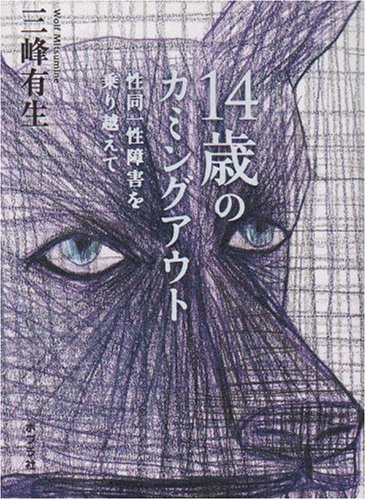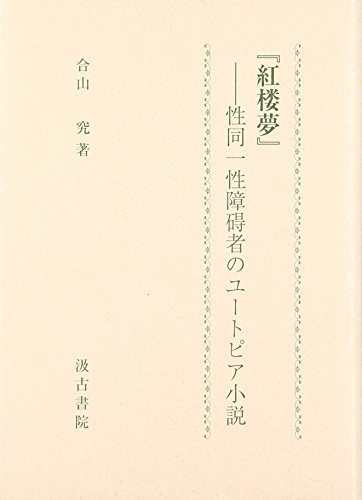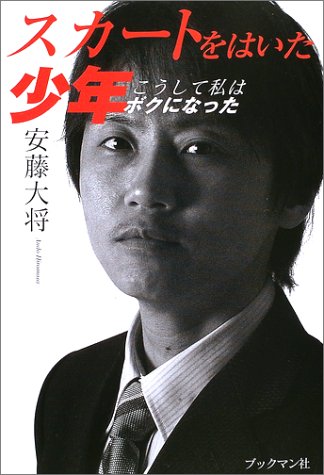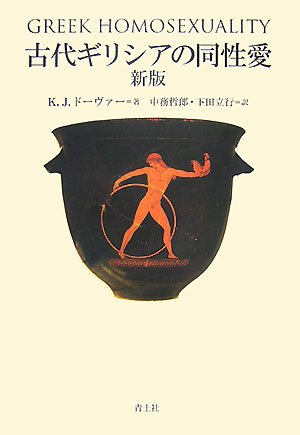7 0 0 0 クィア・サイエンス : 同性愛をめぐる科学言説の変遷
- 著者
- サイモン・ルベイ著 玉野真路 岡田太郎訳
- 出版者
- 勁草書房
- 巻号頁・発行日
- 2002
7 0 0 0 OA 1980年代以降におけるイギリスの小売商業の構造的変化
- 著者
- 真部 和義
- 出版者
- Japan Society for Distributive Sciences
- 雑誌
- 流通 (ISSN:09149937)
- 巻号頁・発行日
- vol.1997, no.10, pp.76-90, 1997 (Released:2010-08-05)
7 0 0 0 14歳のカミングアウト : 性同一性障害を乗り越えて
7 0 0 0 OA 官報
- 著者
- 大蔵省印刷局 [編]
- 出版者
- 日本マイクロ写真
- 巻号頁・発行日
- vol.1937年12月28日, 1937-12-28
- 著者
- Shota Teramoto Yuka Kitomi Ryo Nishijima Satoko Takayasu Natsuko Maruyama Yusaku Uga
- 出版者
- 日本育種学会
- 雑誌
- Breeding Science (ISSN:13447610)
- 巻号頁・発行日
- vol.69, no.3, pp.508-513, 2019 (Released:2019-09-18)
- 参考文献数
- 28
- 被引用文献数
- 14
Root system architecture (RSA) is one of the most important traits determining water and nutrient availability for plants. Modification of RSA is known to be a useful approach for improving root performance of crops. However, for conducting root phenotyping, there are few alternatives for the rapid collection of root samples from a constant soil volume. In this report, we propose a rapid root-sampling method, which uses a steel cylinder known as round monolith and backhoes to reduce the physical effort. The monolith was set on the ground surrounding individual rice plants and vertically driven back by a backhoe. Soil samples with 20 cm width and 25 cm depth were excavated by the monolith, from which root samples were then isolated. This backhoe-assisted monolith method requires at most five minutes to collect root samples from one plant. Using this method, we quantified the root traits of three rice lines, reported to form different types of root system such as shallow-, intermediate-, and deep-roots, using a root image analysis software. The data obtained through this method, which showed the same trend as previously reported, clearly demonstrated that this method is useful for quantitative evaluation of roots in the soil.
7 0 0 0 尋常性痤瘡治療ガイドライン2017
7 0 0 0 レスビアンの歴史
- 著者
- リリアン・フェダマン著 富岡明美 原美奈子訳
- 出版者
- 筑摩書房
- 巻号頁・発行日
- 1996
7 0 0 0 OA 東条内閣と「国策再検討」-開戦決定と東郷外相-
- 著者
- 森山 優
- 出版者
- JAPAN ASSOCIATION OF INTERNATIONAL RELATIONS
- 雑誌
- 国際政治 (ISSN:04542215)
- 巻号頁・発行日
- vol.1996, no.113, pp.152-166,L17, 1996-12-30 (Released:2010-09-01)
- 参考文献数
- 64
This article analyzes how the Tojo Cabinet arrived at an agreement to go to war with America, Britain and the Dutch East Indies. The Tojo Cabinet would not to be bound by the ‘Guidelines for Implementing National Policy’ that were adopted by the Third Konoe Cabinet and would ‘return to white paper’. But the Guidelines which were adopted after two weeks reconsideration, specified a deadline for concluding talks with Washington, after which war was to be decided upon. Does this decision meant that The Tojo Cabinet overcome the structural defect of the Meiji Constitution? The decision-making system of the Third Konoe Cabinet was characterized by Ryoron-heiki that incorporate the interests of all the opposing government institutions and Evasion of Decision-Making that evaded decisions in order to avoid conflict. The prime minister could not override the interests of the various government organs. It was owing to the structural flaw in the Meiji Constitution which saw legislative power shared between the Cabinet and the General Staff.Togo agreed to be Foreign Minister on condition that The Tojo Cabinet was committed to work hard to bring negotiations with the United States to a success. Togo and Finance Minister Kaya stated that if Japan could not win a long war, there was no reason for going into it. Then, how did the Tojo Cabinet come to such a conclusion? This paper examines the following points.1) Analyzing the logic of ‘Reconsideration of National Policy’. The main purpose of the reconsideration was to deny the possibility of the policy of ‘perseverance and patience’. There were not enough reasons to conclude that the war was the better selection. The reconsideration did not examine the situation of a long drawn-out war. Nevertheless, to get such a conclusion, it was essential for it to be reinforced by uncertain factors such as a favorable change of the international situation, the establishment of ‘selfsufficiency and economic invincibility’.2) Examination of the ‘concessions’ of Japanese Foreign Policy to America. Foreign Minister Togo adopted, many ‘concessions’. Fixing a term to withdrawal from China, preparation to remove the Japanese troops stationed in the southern part of French Indo-China to the nothern part, were the most important proposals. The Third Konoe Cabinet had collapsed when war Minister Tojo resigned in rejecting plans for the Japanese Army to withdraw from China. The explanation of why and how Togo could succeed to reach an agreement with the Cabinet and the General staff. Can be drawn from the complex decision-making system of the Meiji Constitution.
7 0 0 0 100語でわかるセクシュアリティ : 人間のさまざまな性のあり方
- 著者
- 古橋忠晃 守谷てるみ訳
- 出版者
- 白水社
- 巻号頁・発行日
- 2013
7 0 0 0 『紅楼夢』 : 性同一性障碍者のユートピア小説
7 0 0 0 スカートをはいた少年 : こうして私はボクになった
- 著者
- Takefumi Hiraki Shogo Fukushima Hiroshi Watase Takeshi Naemura
- 出版者
- The Institute of Image Information and Television Engineers
- 雑誌
- ITE Transactions on Media Technology and Applications (ISSN:21867364)
- 巻号頁・発行日
- vol.7, no.4, pp.160-168, 2019 (Released:2019-10-01)
- 参考文献数
- 18
- 被引用文献数
- 5
We previously studied methods leveraging pixel-level visible light communication (PVLC) that embeds imperceptible information for human eyes in each pixel of an image. The PC computation load and amount of data transferred between the PC and projector in previous PVLC systems were excessive because the PC executed both the video and data encoding processes. As a result, it was impossible to achieve both high-dynamic-range images and dynamic updates of the images and data. In this paper, we propose a dynamic PVLC system that offers high video quality and interactively updates the PVLC information through hardware encoding processing. Our system can project a 24-bit gradation color PVLC video that contains 64-bit data at 120 fps by synchronously controlling the ON/OFF states of the DMD and LED light sources at the given performance limit of the projector.
7 0 0 0 古代ギリシアの同性愛
- 著者
- K・J・ドーヴァー著 中務哲郎 下田立行訳
- 出版者
- 青土社
- 巻号頁・発行日
- 2007
- 著者
- 研究代表者 町浦美智子
- 出版者
- 町浦美智子
- 巻号頁・発行日
- 2007
- 著者
- 増山 賢治
- 出版者
- 愛知県立芸術大学
- 雑誌
- 愛知県立芸術大学紀要 = The bulletin of Aichi University of the Arts (ISSN:03898369)
- 巻号頁・発行日
- no.46, pp.3-16, 2017-03-31
7 0 0 0 深圳の農村はいかにして無くなったのか
- 著者
- 小島 泰雄
- 出版者
- 公益社団法人 日本地理学会
- 雑誌
- 日本地理学会発表要旨集
- 巻号頁・発行日
- vol.2018, 2018
1.問題の所在<br><br> 深圳は中国南部、珠江デルタの先端に位置し、香港に隣接して国策として建設された都市である。1979年に宝安県から深圳市が析出され、翌年には経済特区として指定をうけ、以後、30年あまりの間に人口1000万の都市に成長するという、類い無き都市化が展開した。<br><br> 深圳は中国ではじめて農村が無くなったことでも知られる。ここで農村が無くなったといわれるのは、制度的に"無農村建制"(農村制度が無くなった)、"無農民戸口"(農民戸籍が無くなった)ことを差すが、同時に農村都市化の一般的な過程を経験したことを示す。<br><br> 本報告は、2017年夏季に行われたフィールド調査と地方誌に依りつつ、いかに深圳が農村を失っていったのかについて検討し、深圳の地域像を更新することと、珠江デルタの農村の一つの極地の形成過程を確認することを目的とする。<br> <br><br>2.万豊村の経験<br><br> 万豊村は深圳市の西北部、宝安区沙井街道に属しており、現在は万豊社区となっている。祠堂の残る旧来の集落を囲んで多様な建築群からなる住宅区と工業地区という2種の景観地域で構成されている。《万豊村史》(2001年)に描かれる万豊村の景観変化は、概略以下のようなものである。<br><br> 農地は水田より畑が多く、西の浜で牡蠣の養殖を行っていた万豊村は、1978年の香港への密航ブームに巻き込まれ、村民の半分近くが香港へ行ってしまった。万豊村の改革開放はこうした負の出発点に始まり、生産請負制の導入による専業戸が牽引する農業活性化が進められた。1982年に最初の香港資本の工場として香港フラワーの工場が進出、続いて金属加工、玩具工場の誘致に成功する。経済特区に隣接し、用地と労働力が安く得られることが立地要因となっていた。その後、"三来一補"と称される加工貿易の工場が毎年10近く増えていった。工業化は農地の転用を必要とし、一時的に外来人口の増加(1990年代末には6万人)の需要を満たす養殖業が盛んになったが、農業は急速に後退していった。<br><br> 万豊村はこの過程で新たな共有制のシステムを立ち上げ、農村開発の一つのモデルとして全国に知られるものとなった。1984年に設立された万豊股份公司は、農民が共同で投資して工場棟を建て、それを外資企業に貸し出すことで賃貸収入を得るという機構をもつ。当初は投資する村民は一部に限られたが、配当の大きさから多くの村民が参加するようになり、1988年には広東省の優秀企業の一つに数えられるまで成長し、村民は生活、福祉の両面で豊かさを享受することとなった。<br><br>3.坂田村の経験<br><br> 坂田村は龍崗区坂田街道に属し、かつて関内と呼ばれた初期の経済特区の北に隣接している。世界有数の情報機器企業に成長したHUAWEIの本部が集落の北にひろがり、丘陵斜面に並ぶ客家集落は旧来の風貌を残すが、二重三重に住宅地区に囲まれ、整備された街路を走っていると、その存在に気づくこともなくなっている。<br><br>《輝煌坂田》(2010年)によると、丘陵地帯に位置する坂田村はかつては交通条件が悪く、近くの市場町の布吉鎮まで自転車で1時間かかっていた。1980年には早くもセーター工場が進出したが、1985年にはすべての工場が撤退し、農民は特区や布吉の工場に流出していった。本格的な開発は1980年代末に始まる都市計画の実施を待つこととなった。1994年には坂田実業股份有限公司が設立され、工場建物の管理を行っていたが、2007年に坂田実業集団に改制される頃には不動産開発と管理が主たる事業となっていた。2004年には、それまでの鎮-村の農村行政制度が街道-社区の都市行政制度に編成替えされ、翌2005年には農地の国有化が終了した。<br><br>4.おわりに<br><br> 経済特区の設定は香港企業を中心とする多くの工場を深圳の農村にも進出させ、その結果、農地の転用が進み、農村の都市化が進展していった。近年、住宅建設が都市化の重要な要素となり、さらに行政制度が農村のそれから都市のものへと転換されたことで、深圳は名実ともに農村を失うことになったと整理されよう。
7 0 0 0 よくわかるゲイ・ライフハンドブック
- 著者
- 宝島ゲイ・スタッフ編
- 出版者
- 宝島社
- 巻号頁・発行日
- 1994
7 0 0 0 IR キャリアモデルの発展と転職観の変化
- 著者
- 安藤 りか
- 出版者
- 日本キャリアデザイン学会
- 雑誌
- キャリアデザイン研究 (ISSN:18802753)
- 巻号頁・発行日
- vol.7, pp.199-212, 2011-09
This article outlines the changing position of career change within linear and non-linear career models. First, the article points out that within Japanese studies, the definition of career change is limited to "company turnover," while in western studies, career change takes on many various definitions. Next, the article discusses the positioning of career change by separating it into the linear career models before the beginning of the 1980s and the non-linear career models that followed. Specifically, in the linear career models which assume a static organizational structure, career change is mainly interpreted as a "deviation." However, "intra-organizational career change" and "desire to change careers" gained prominence towards the end of the 1970s, and within the more flexible non-linear career models that appeared during the 1990s, it became clear that career change came to be interpreted as "something to independently be involved in." In particular, through more extensive discussion on the boundaryless career (Arthur, 1994) and the protean career (Hall, 1976), career change has developed into a concept that encompasses a "career-changing frame of mind" and "inherent socio-cultural context." Finally, the article discusses the necessity of qualitative research on career change in Japan as an issue for future research.
